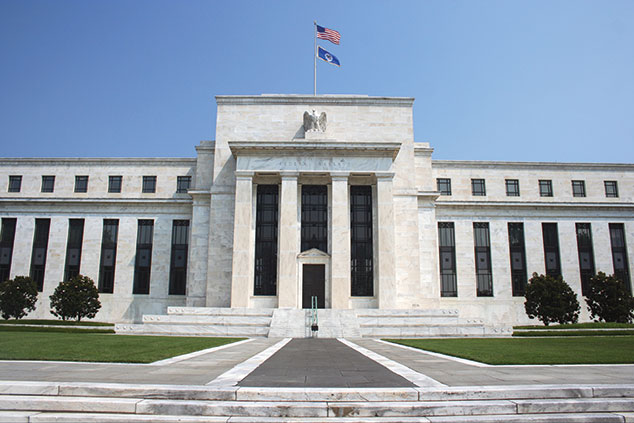
More and more investors are using exchange-traded funds (ETFs) to get low-cost access to various themes and markets. However, I suspect many more would like to use them but are confused by the wide range of choice out there.
It’s one thing to track the FTSE 100 or the S&P 500, but once we head away from well-known benchmarks like these, most of us don’t really understand the pros and cons of specific indices. So every month or so I plan to outline a shortlist of solid ETFs to choose from, all focused on one particular asset class or theme. I’ll concentrate on the biggest, most liquid, and best-value ETFs in each case.
Practically risk-free options
Let’s kick off with the most defensive category – bonds that are as close to risk-free as you can get – ie, alternatives to cash. We all run cash in our portfolios at varying points. It would be nice simply to pull this across into a high-street savings accounts backed by the Financial Services Compensation Scheme (FSCS), but much of the time it’s simply not practical to do so.
This is where bond funds investing in highly rated, mostly sovereign, investment-grade bonds – usually with a short maturity profile – come in. By keeping the maturity of the bonds to a few years maximum, you can minimise interest-rate risk (longer maturity corporate bonds might pay out a juicier yield, but total returns are much more vulnerable if rates rise sharply). There is lots of competition in ETFs in this sector.
For instance, Invesco recently announced it is launching the lowest-cost US Treasury Bond ETFs in Europe. Investors can choose to focus on US government bonds with maturities of between one and three years; three and seven years; or seven and ten years. Alternatively, they can get broad exposure across the full maturity spectrum.
The four funds will be available to trade in US dollars or pounds on the London Stock Exchange and charge just 0.06% a year. A sterling-hedged version of the Invesco US Treasury Bond 7-10 Year ETF (LSE: TRXS), which would help to protect against exchange-rate fluctuations, is also available at an ongoing charge of 0.1% a year.
US government bonds may well represent great value, with bountiful yields compared with other developed-world government debt. The yield on the benchmark ten-year US Treasury bond index has more than doubled from its lows in mid-2016.
Yet I suspect this yield probably won’t head much higher from here, and that in fact after a year or two yields might start to fall again as US growth slows and the US central bank (the Federal Reserve) starts to cut rates again. The big challenge for a sterling investor is the exchange rate, which is why the hedged, longer-dated ETF offered by Invesco might be worth investigating.
More established ETFs
If you are looking for ETFs that have been around for longer, I’ve highlighted five in the table above. All are large enough to be very liquid in trading terms, as well as offering low total expense ratios (TER). They all invest in either ultra-short duration bonds (mostly government ones), or equivalent money-market instruments with some low-risk corporate bonds.
The first ETF, the German bond fund, is a slightly left-field candidate, but if there is a financial panic, I’d expect European bond investors to opt for the safest haven close by – which will be German government bonds (or bunds).
Next comes an ETF from Vanguard, which tracks a broad selection of UK gilts and has an average yield to maturity of just 1.5%, but a total cost of ownership of just 0.12%. Gilts are a relatively safe way to stash away some cash earmarked for investing. However, longer-maturity gilts might be vulnerable in a sterling sell off, so it’s worth noting that the Vanguard fund holds more than 50% of its portfolio in gilts with a maturity of more than ten years.
Index-linked gilts focus on inflation protection. This is where the third ETF on the list – an iShares fund – comes in. It is one of the biggest, most liquid funds in this sector, although the yield is next to nothing.
The fourth ETF is the iShares Ultra Short Term ETF, which is very low cost and sterling denominated. I really like this fund because it is diversified between corporate and government issuers, but more than 85% of its holdings are in bonds due to mature inside two years. The average yield to maturity is 1.42%.
For those worried about the possibility of Jeremy Corbyn being elected – which could prompt massive selling of gilts – my alternative favourite, and the last fund on the list, is PIMCO’s US Dollar Short Maturity fund, which has a higher TER of 0.35%. It’s an actively managed ETF that invests primarily in short-duration, dollar-denominated bonds across countries and issuers (government and corporate). This is a big beast of a fund, with nearly $2.4 bn under management. Around 69% of that is invested in investment-grade corporate bonds, and all but 6% is in bonds with a maturity of less than a year. The estimated yield to maturity is 3.35%, but remember that you are vulnerable to fluctuations in the sterling-dollar exchange rate.